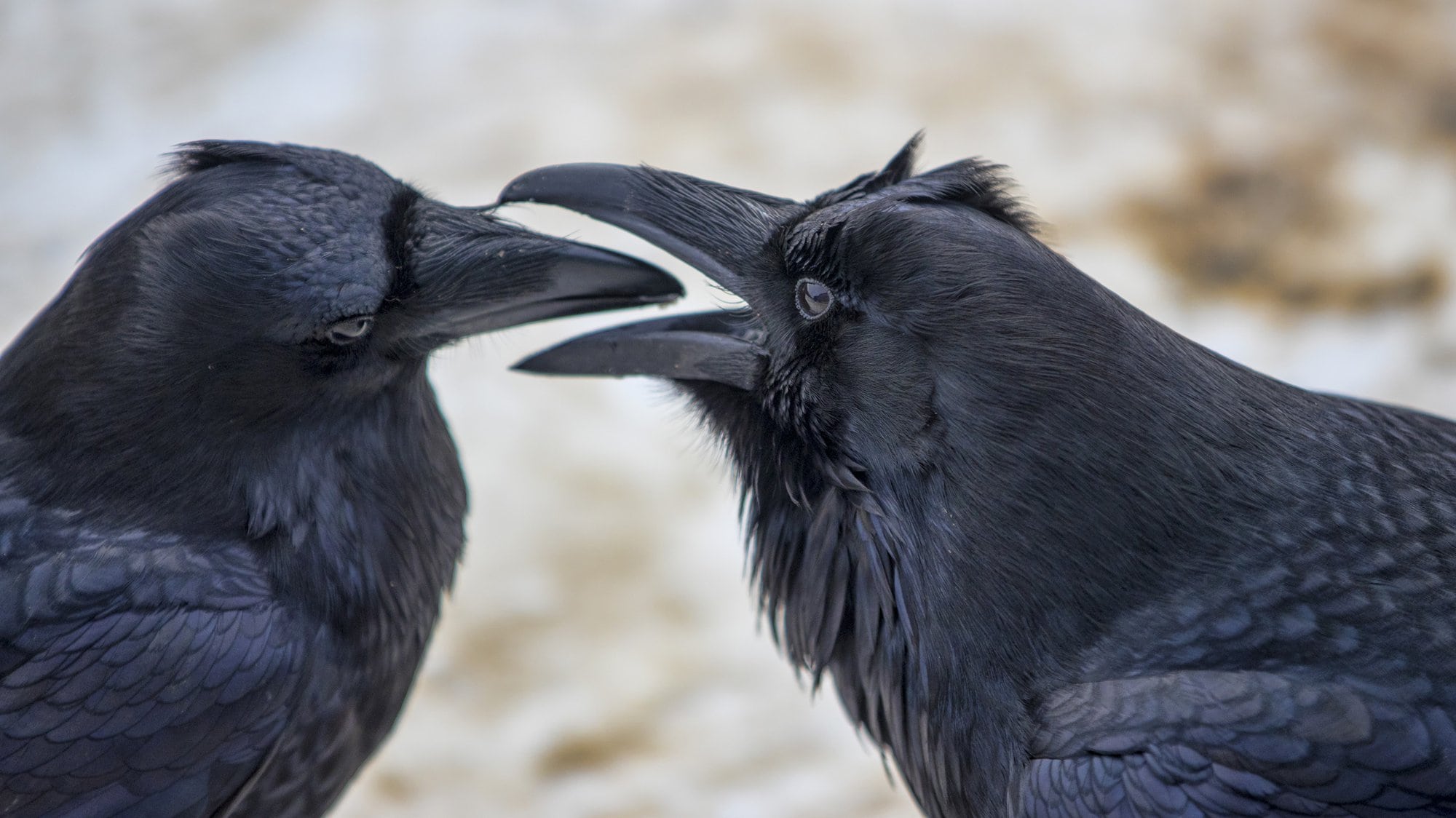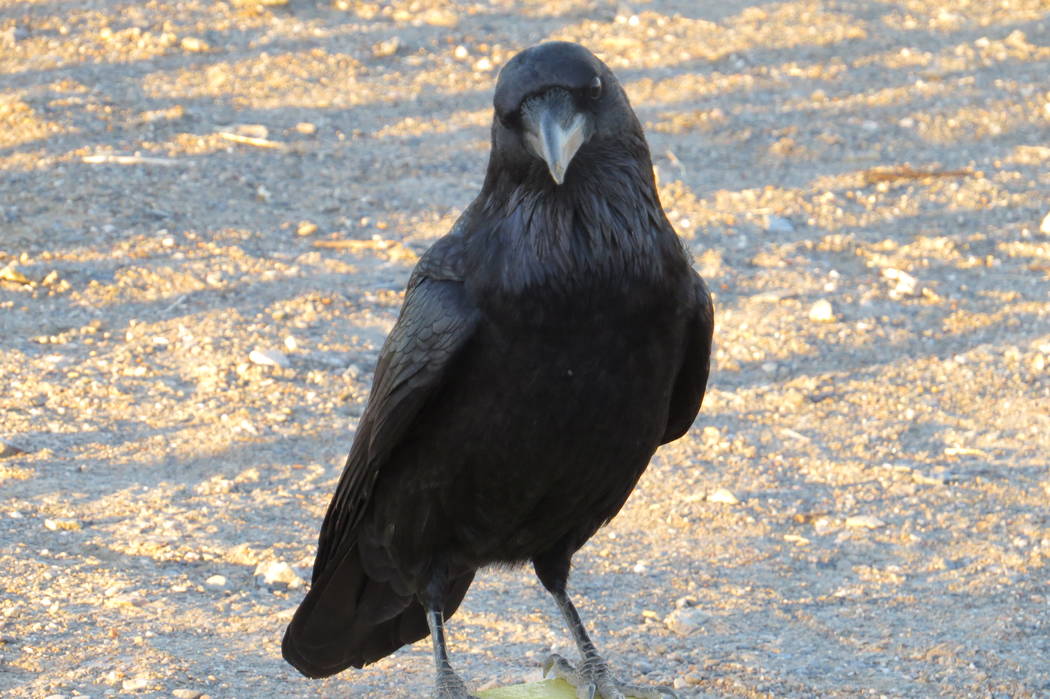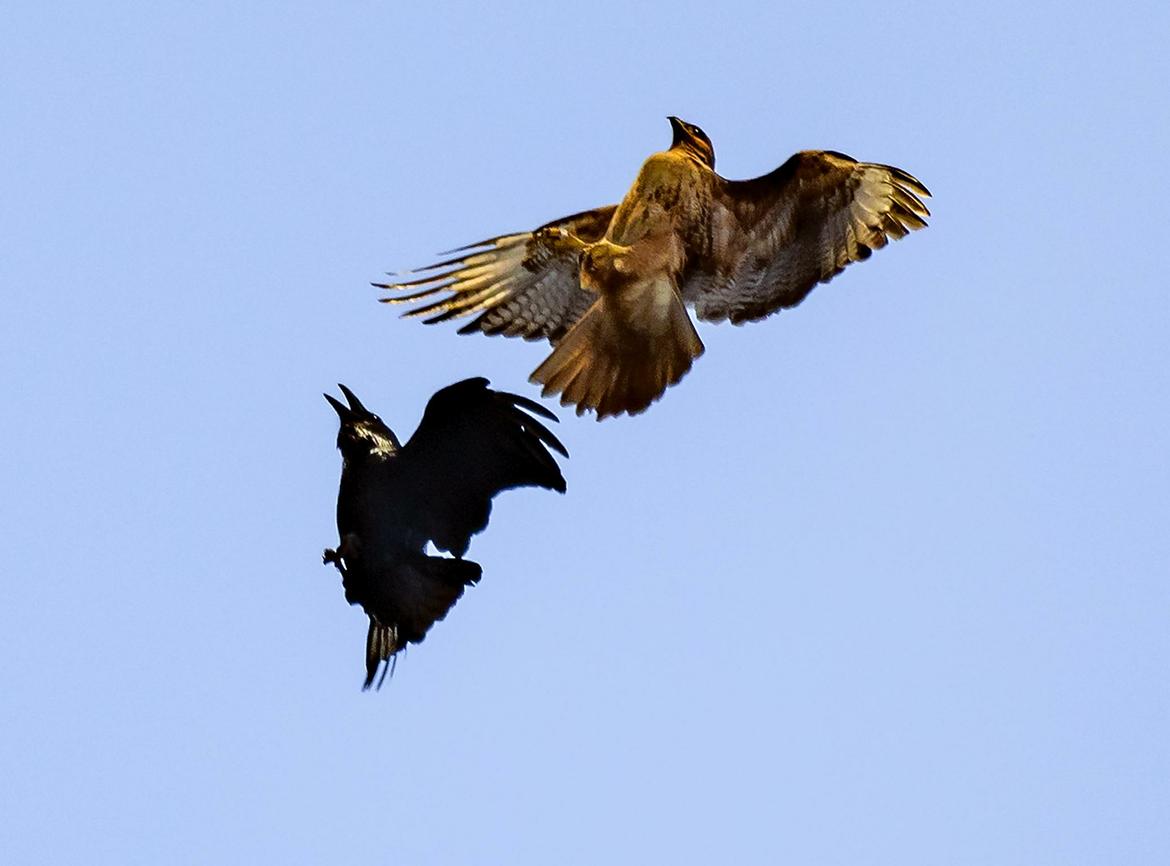Birds of the Future
By Paloma MacKenzie
During the winter, I always seem to notice crows in the neighborhood more often. It’s become a common occurrence to see them in groups in the late afternoon. The caw of the crow is not what some would call a mellifluous bird song, but I find it endearing anyway. Almost as if they are crying for the sunset, I can see the birds atop the bare branches where their nests can be seen until springtime brings back their foliage.

It seems that they’ve become more numerous in recent years. Previously I’d always considered the urban bird to be the pigeon. And if you’re near the ocean, you know that seagulls rule the beaches and wharfs. I can’t think of anyone who hasn’t had a picnic interrupted when they unknowingly left their snacks out of view and in the vicinity of a curious gull. But crows are beginning to take up these spaces, too. Culture has dictated for so long that the presence of these birds is a curse—that they bring bad omens with them. For instance, their flocks have been referred to as “murders.” And for ravens, “conspiracies.”

Crows are cunning. Corvidae—the crow family, which includes ravens and scrub jays—have proven themselves to be some of the smartest birds because of their strong memories. In the PBS documentary, A Murder of Crows, I’ve seen scientists teach a group of birds the face of a predator (in this case, a masked man), who then pass on the information to their offspring. In this instance, a young crow sounds the alarm when he sees the masked figure he was warned about but had never personally seen. They show complexity in their communication with the variety of calls they make. They function as a family for years after they’ve grown up. They hold funerals for lost ones in which they all participate in a choir.
It’s believed that human development has cleared the way for them to flourish. It’s easy to see why: they’re intelligent and adaptable. And any creature with a penchant for picking food out of human garbage will find more opportunities the further we spread into what was once the wilderness. Still, I often see crows picking wild food from trees and bushes, unlike pigeons, who seem to only go for human food scraps.

These brilliant birds are in our presence every day. Some, however, prefer to live on the outskirts of civilization. Take a stroll into the hills in Grizzly Peak and you’ll be sure to hear some croaking—the call of the crow’s cousin, the raven.
Ravens gather in smaller flocks. Besides their call, you can tell the difference between a raven and crow by the shape of their tapered tail feathers and the pronounced curve of their beak. They are also larger and tend to be more carnivorous. Because they tend to live further out in the wilderness, they are more likely than crows to rob neighboring nests for a meal or kill other small prey. Some scientists have raised alarm for the endangered snowy plover, whose nests saw an increase in attack from the growing raven population. Others believe that more ravens may not necessarily be as bad as human development has been on the state of bird populations.

In the Bay Area, crows and ravens are most frequently hunted by hawks and owls. I wonder if a greater raptor population would cull the corvid populations. Raptors are most at risk for being poisoned from contaminated food sources like mice. It seems to me that the more intuitive solution to unwelcome rodents is to make space for the animals that feed on them. We could have better pest control if we allowed our carnivorous birds to eat safe food freely.
Another factor that is threatening the raptor population is the intensity with which the wildfires have been raging in the last several years. Woodland animals flee their homes in search of safety when disaster strikes. There is no way of knowing whether this fire activity will slow down, so we must prepare for either more of the same or worse to come. We should consider what we can do to help our vulnerable wildlife so that they have a chance to thrive in a balanced ecosystem.

At a time when many native bird species are at risk from these mounting challenges, I believe the crow population will continue to grow. They are comfortable choosing homes among humans. They’re resourceful. They succeed at using teamwork to look after their own. We shouldn’t look at crows as bad omens, but rather as the wonderous birds that they are. At times when I feel like I’m not sure what the state of the world will bring, these birds embody resilience. That is inspiring.
To find out more about helping birds of prey, visit Raptors Are The Solution at www.raptorsarethesolution.org
About Paloma: Paloma MacKenzie is a longtime East Bay resident who takes great pleasure in observing wildlife in unlikely places. Being named for the dove, she has always felt an affinity for birds in particular – one of her favorite childhood activities was visiting the flamingoes at the Palm Desert Marriott. When she’s not hiking with hawks in the Oakland Hills or watching pigeons feast on the streets of Berkeley, she enjoys electronic music and hunting down the best donuts in town.
